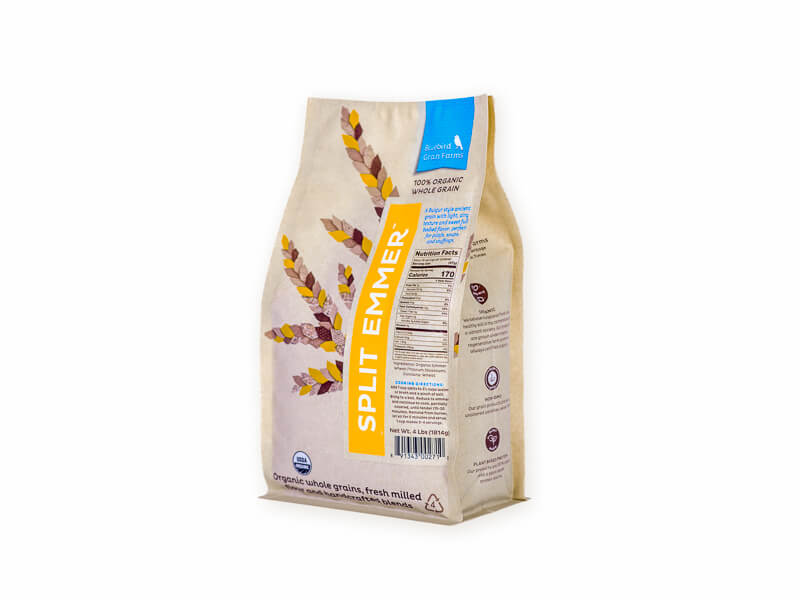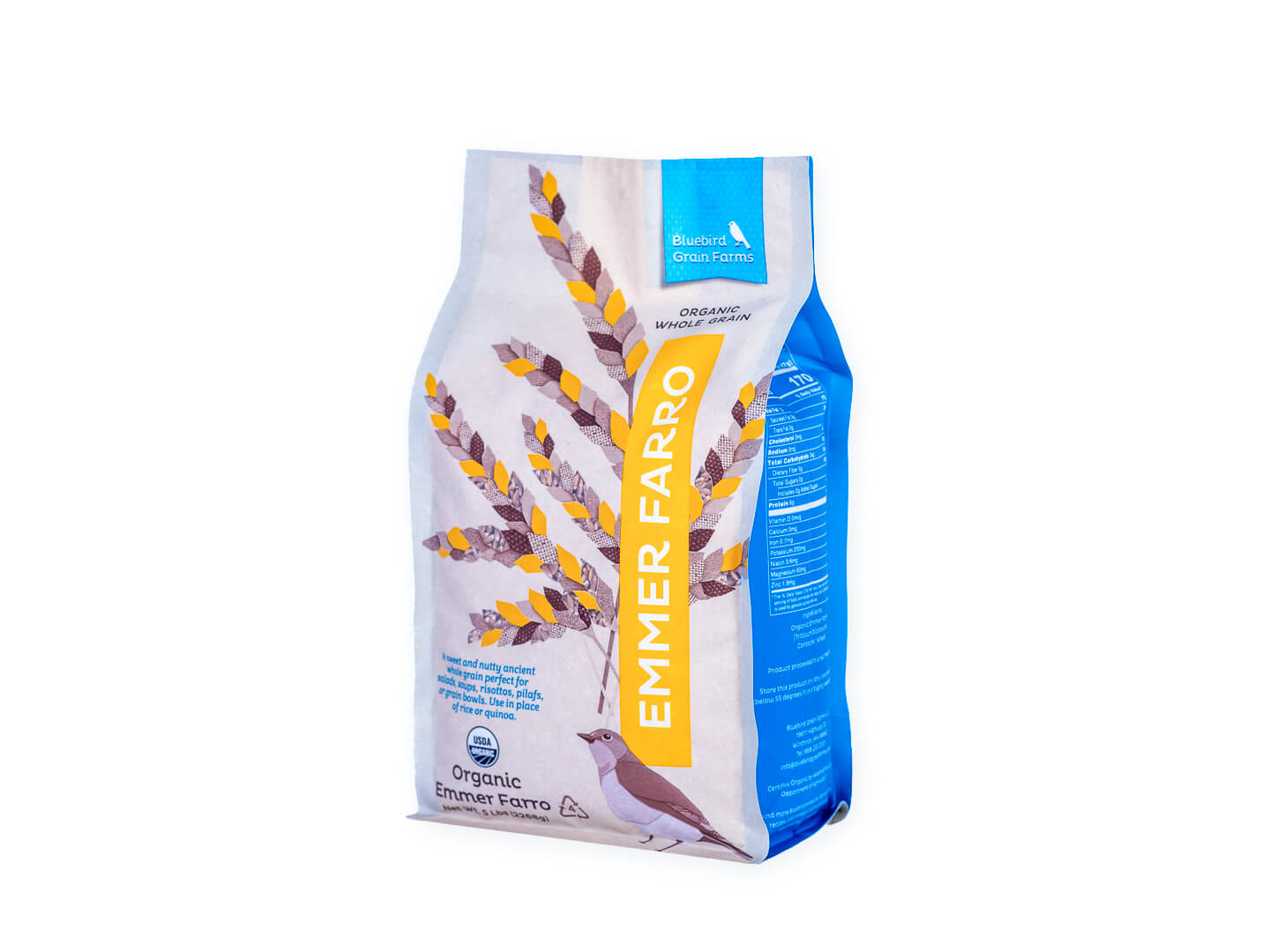Ingredients
Caramelized Onion Stock
- 5 pounds yellow onions not sweet onions
- 8 cups chicken or duck stock
- 1 tablespoon butter
- 1 tablespoon balsamic vinegar
- 2 teaspoons salt
- 1 bay leaf
Farro Risotto Ingredients
- 2 cups Bluebird Emmer Farro
- 6 cups caramelized onion stock (see recipe below)
- 1/2 cup onion finely diced
- 1/2 cup celery diced
- 1/2 cup leek diced
- 1/2 cup carrot diced
- 1/4 cup dried currants
- 1/4 cup butter
- 2 tablespoons sage chopped
- 1 tablespoon fresh thyme chopped
- 1 bay leaf
- salt to taste
Methods
For Caramelized onion stock
- Cut onions in half from pole to pole. Thinly slice them vertically, making sure to cut them a similar thickness.
- Melt the butter over medium heat in a heavy bottomed pot large enough to hold all the onions. If a heavy bottomed pan is not used, the onions will burn.
- Add the onions, the balsamic and the salt. Cook slowly, stirring every several minutes until the onions have lost 70 percent of their volume. They should not be getting much color at this point.
- Continue to cook onions until they caramelize onto the bottom of the pan, scraping off the caramelized layer on the bottom of the pan completely. Repeat this process until all the onions have a deep brown color and are very sweet. Be very careful not to scorch the onions! This is very easy to do, and will cause a bitter, burned flavor. The onions should have a pleasing caramel sweet smell while cooking. If they smell acrid or scorched at any point, add a little water to the pan and scrape away all the caramelized bits on the bottom.
- When the onions are finished caramelizing, they should have lost 90% of their volume. Add the stock and bay leaf, and simmer for one hour.
- Strain out the onions. The stock is now ready for use.
Farro Risotto
- Over medium high heat, melt butter until it is browned and nutty smelling. Add the farro, sage and 1 tablespoon salt to the butter and stir occasionally for about five minutes. Be careful not to scorch the farro. This process toasts the grains and adds a nutty flavor to the farro.
- Add half of the onion stock, bay and thyme and bring to simmer. Stir occasionally until most of the liquid has evaporated.
- Add more onion stock ½ cup at a time, continuing to stir occasionally until the farro is cooked though. This will take some time. The amount of time and stock used varies drastically based on the size of pot used and amount of heat applied.
- The farro is done when the grain has no chalky interior when bitten into. A few of the grains may have split while cooking, but there should not be many. It will still be a bit chewy.
- To finish, in a pot larger than the volume of farro, melt 2 tablespoons of butter over medium low heat. Add the vegetables and “sweat” them until they are cooked through. They should not caramelize.
- Add the currants and ¼ cup of onion stock. Cook for 3-5 minutes or until the currants are plumped.
- Fold in the cooked farro and stir well to combine. Heat through, adjust for seasoning and serve.
- To achieve a more luxurious risotto, fold in ¼ cup of butter into the risotto. This will give the risotto a silken coating and a velvety shine.



